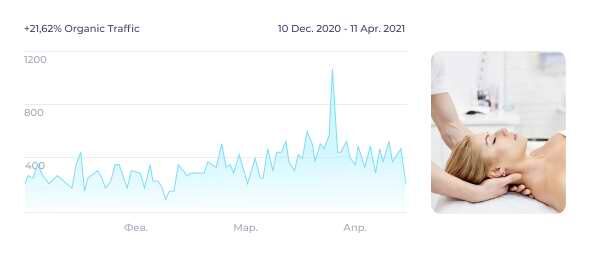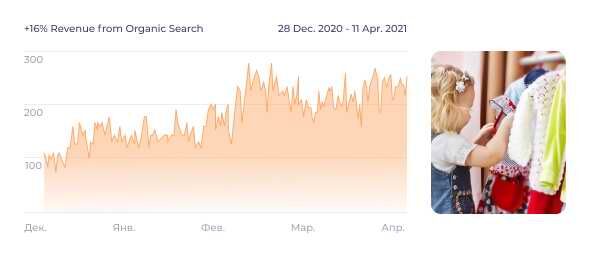Region: UAE, Dubai and Abu Dhabi.
Domain age: 1 year.
Start of work: February 5, 2021.
The site contains tutoring services for children in different areas – English, French, Arabic language courses, boxing, soccer, volleyball coach, learning to play the guitar, piano cello, etc. The online platform acted as an intermediary.
Prepared all the technical base, worked out the semantics, did on-page optimization of problematic clusters. Adapted self-written CMS for further optimization of pages, worked out a link strategy taking into account the analysis of competitors.
The interim result
Traffic dynamics for 4 months of work (for comparison, we also included January):

Since we started, we have already managed to increase organic traffic from search engines by 35.77% – from 1,475 to 2,458 users per month. Blue on the graph shows traffic for the last month of our work, yellow – the month before the project was brought to us:

We managed to improve the conversion rate of the project by 64.41%:

CTR increased from 1.89% to 4.8% at the peak:
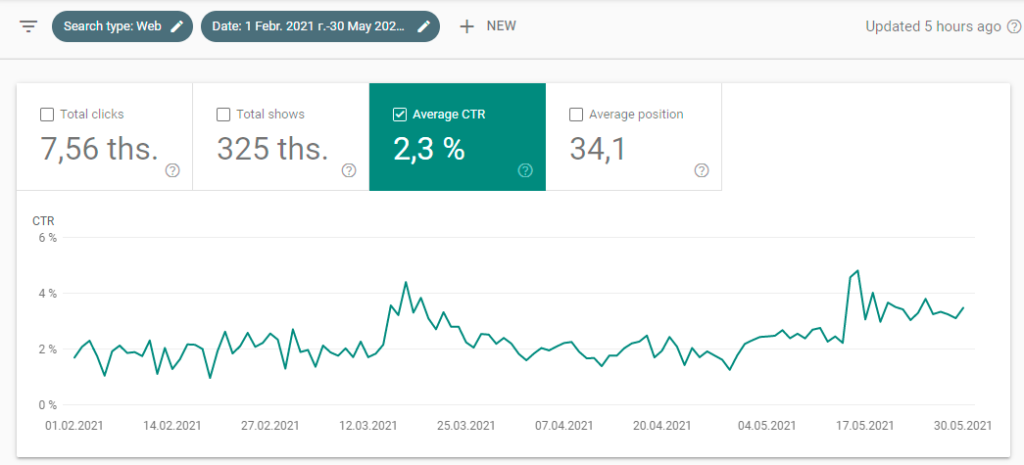
How it all began
The site came to us in poor technical condition:
- Self-written CMS was not ready for optimization of landing pages. It was virtually impossible to add meta tags to the pages, such as titles and descriptions. Even the H1 title was not present everywhere.
- The text on the page was presented as a large continuous text. There was no editor in the admin panel. Internally it looked like this:
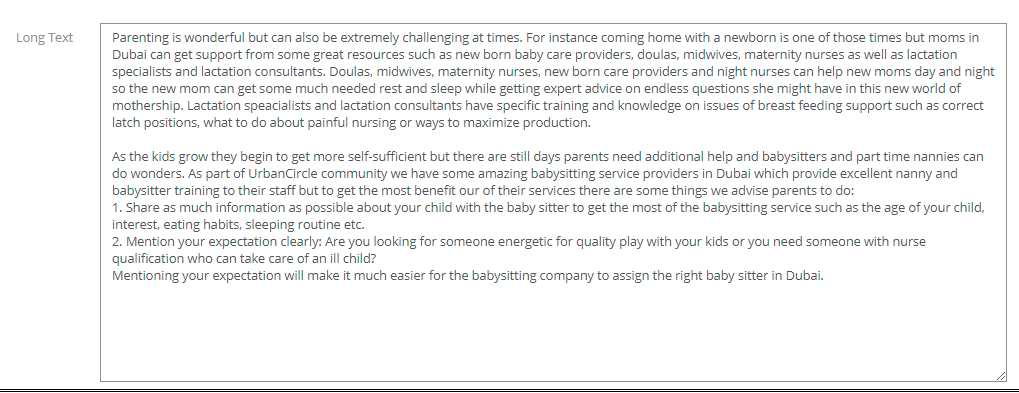
And here is how it looked on the site:
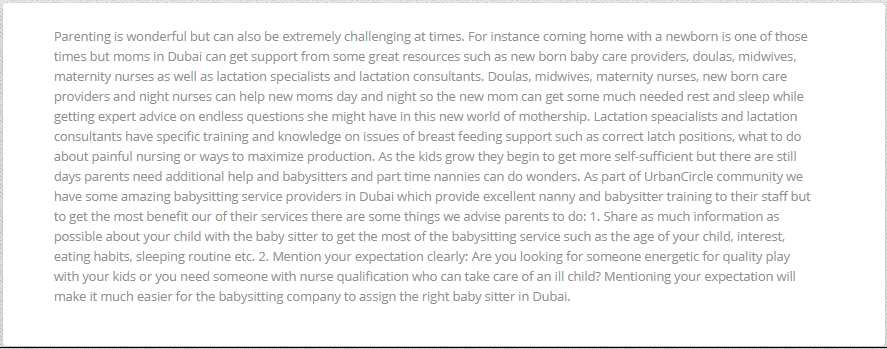
- It was not possible to edit the home page, the About page and other static pages.
- Paginated pages were closed in robots.txt, and the titles and descriptions of the second and subsequent pages duplicated the meta tags of the first page. To solve the problem, we assigned “Page 2, Page 3…” to them.
- 145 pages of the site had no H1 header:

- There was no breadcrumbs markup, so it was hard for the user to understand which section he was in now. And the pages that were important for promotion did not receive the necessary link weight.
- There were problems with the rating’s markup. When in reality there were 5 stars, but in the code there were only 3.
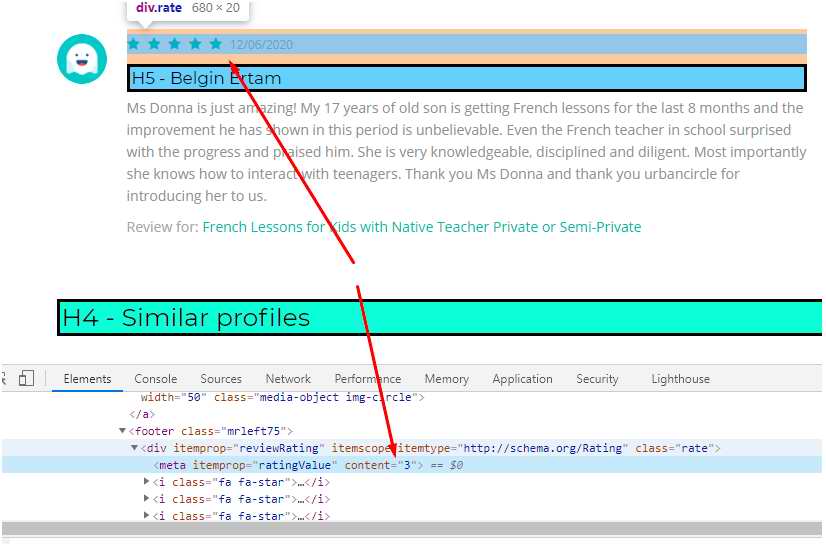
- We found an open subdomain that was indexed and interfered with the promotion of the main domain. To solve the problem, we closed it in robots.txt with the directive Disallow: /.
Among other things, the site had a lot of typical errors in the form of broken links, incorrect XML map (it was not updated automatically), double meta tags. We managed to fix all these mistakes.
And the most serious problem was non-configured filters on the site, which could not generate CNC. In addition, all of them were open for indexing, so it was a great drain on the crawl budget. Also, these pages could not be assigned a readable URL. The URLs of landing pages generated by the filter looked like this – https://site/service-provider-search?categories%5b%5d=1&childcare%5b%5d=1&s=Tag:+Baby-led+Weaning.
After some fine-tuning we were able to bring all the ugly URLs to a readable form: https://site/sports/volleyball-classes. This makes it easier for the robot to work with such addresses, it visits them more often and indexes them, you can bring them into a normal sitemap.xml.
What about the semantics
For this project we collected a large semantic core of 900 keys. Here is a fragment of the structure:
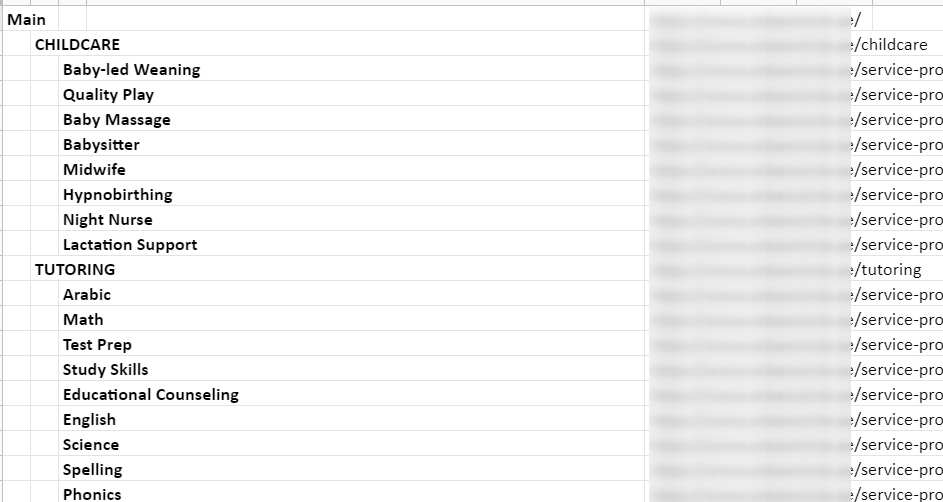
Cleaned up, clustered, distributed on landing pages.
All the pages were assigned meta tags – titles, descriptions, H1. We analyzed competitors and compiled the URLs which brought them the most traffic. We first and foremost focused on preparing texts for these pages. In the technical specifications, the copywriters were not only given keywords, but also LSI-requests, which increased the relevance of the page. With their help, the clusters ranked well for the right queries.
What was done of link promotion
Competitors in the niche built competent link profiles that helped them promote themselves. The average link growth rate was 20 links per month. And it was not only thematic directories, but also good trusted donors. All of this indicates significant budgets. Fragment of the link niche analysis:

To replicate the competitors’ profile, we worked through the anchor list, determined the rate of growth, the ratio of dofollow and nofollow links.
The screenshot shows how we built a link profile from February to May:
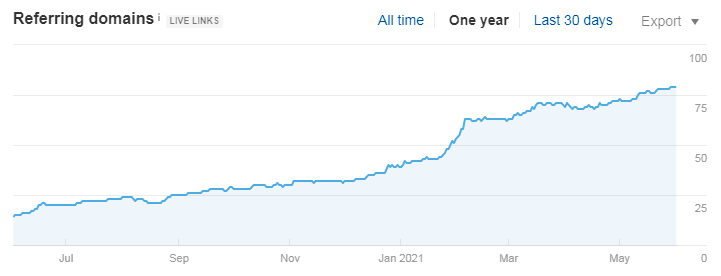
The gradual increase in donors had its effect – the number of requests in the top grew for the project:

What’s in the plans
After the launch of the link promotion and elimination of all technical errors, we wanted to optimize the site for E-A-T, so that it meets all the requirements of the assessors. Also planned to launch a blog to expand the semantic core and coverage of information queries. Especially since visitors from the blog were likely to transform into customers. This is due to the specifics of the topic.
